
“A proud man is always looking down on things and people, and, of course, as long as you are looking down, you cannot see something that is above you.” - C.S. Lewis
For non paid subscribers, if you would like to contribute to this newsletter, you can support buying me a coffee, donations are welcomed and content is free of charge for all.
Devotional: Luke 7:36-50
The Nameless Woman
It was the man’s eyes that captured her attention. They radiated tenderness and compassion, soothing not only her heartache but also her very soul. She felt as if he could see directly into her brokenness, yearning to mend it.
As a widow mourning the loss of her only son, she felt utterly powerless to face another day. Each moment of grief was like an amputation—painful, unbearable, and consuming.
Tears blurred her vision as she met his gaze near the town gate of Nain. Grief was her constant companion that day, until he arrived, surrounded by a crowd. He noticed her tears and gently told her, “Don’t cry” (Luke 7:13).
Approaching her son’s coffin, he performed the unimaginable—he raised him back to life. She wished she could etch the details of that moment into her memory. She recalled his tenderness and the immediate comfort he brought, though she couldn't remember much about his attire. What stood out was the uniqueness of his walk; the sound of his sandals on the ground was beautiful. The crowd murmured his name—Jesus of Nazareth. After bringing her son back to life, he departed as swiftly as he had appeared.
Overwhelmed by a joy she had never known, she realized her son, once dead, was now alive. In that moment, she resolved: all my life, all my fears, all of me is now surrendered to Jesus of Nazareth. She would find him to express her gratitude. More about her story will come shortly.
Simon, the Pharisee
Let me introduce you to Simon, a man who embodies the essence of pride and self-importance, especially when it comes to matters of faith. He is a Pharisee, and his inflated opinion of himself is palpable. The phrase, "Knowledge puffs up while love builds up," perfectly encapsulates Simon's grasp of knowledge; yet, he remains woefully unfamiliar with the transformative power of love.
As a respected figure among his peers, Simon is comfortable in his elevated status, basking in the accolades of those around him. However, this very pride acts as a blinding veil, preventing him from recognizing the Savior, the Light of the World, seated directly across from him at the table.
Simon’s vision is clouded by self-importance, how about you and your spiritual vision?
Simon’s heart is a fortress fortified by intellect, yet devoid of compassion. He engages in religious debates with fervor, but his arguments lack the warmth of genuine connection. While he can recite scripture and lecture on the law, he struggles to comprehend the grace that sits before him and his own need for forgiveness.
In this moment of fellowship, Simon misses the opportunity to repent and embrace the forgiveness and love that could transform him. Instead of opening his heart, he remains entrenched in his own world, unaware of truth within reach. Simon's story serves as a poignant warning: “So watch yourself! The person who thinks he can stand against sin had better watch that he does not fall into sin.” - 1st Corinthians 10:12
Jesus, Simon, & The Unnamed Woman dine together.
Supper at Emmaus By Caravaggio
The dinner party has three main characters: Jesus, Simon the Pharisee, and the Unnamed Woman. Biblical commentators over time refer to her as “the sinful woman” but she is still nameless. Can you imagine what it would of been like to dine with Jesus? The painting above by Italian Painter Caravaggio depicts a dinner with the travelers on the road of Emmaus.
I am making the case, I could be wrong, but I think consideration should be given the Unnamed Sinful Woman in this passage of Luke 7, is the Widow from Nain.
I welcome your opinions, thoughts, rebukes, and criticism, I am stepping out of my comfort zone in my bible interruption for this devotional. For harsh comments, be kind and email me directly at thesaltandlightdaily@gmail.com.
If your like me, I have read this story before, most commentators agree this story in Luke 7:36-50 is a separate incident than the other alabaster jar anointings as recording in (Matthew 26:6-13, Mark 14:1-11, John 12:1-8). The Matthew, Mark, and John writings give us a place, Bethany, and a name, Mary the sister of Lazarus.
Tear Connection - Luke 7 records only two woman, could they both be the same? Both woman are noted for their tears (Luke 7:13, Luke 7:38). The first reference to tears is one of grief, the second is one of overwhelming thankfulness. What is the woman thankful for? If God raised up a dead family member, as in the case of the Widow of Nain, how you you express yourself to Jesus?
“As she stood behind him at his feet weeping, she began to wet his feet with her tears. Then she wiped them with her hair, kissed them and poured perfume on them.” - Luke 7:38. This sounds to me more than just the unnamed woman has been forgiven but to me perhaps she is the Widow from Nain returning to thank Jesus for raising her only son back to life. Is it a coincidence both unnamed women are in the same chapter of Luke? Your thoughts?
Raising of the Dead connection - The anointing of Jesus by Mary, the sister of Lazarus came after he was raised from the dead. Could the woman in Nain also have had that same desire to thank Jesus for raising up her loved one?
“Christ often answers people who do not speak audibly, he answers those who only speak in their hearts.” - Charles Spurgeon
Reflection & Comments:
Who do you think is the “sinful woman” at dinner with Jesus & Simon, the Pharisee in Luke 7?
I would like our lady Substackers’ to offer their opinion of the unnamed woman in Luke 7?
What areas of pride could be distorting your vision of others, yourself, or God?
In our own lives, who are we missing because of our pride?
References/Resources:
“And how can anyone preach unless they are sent? As it is written: How beautiful are the feet of those who bring good news!” - Romans 10:15
“Knowledge puffs up while love builds up” - 1st Corinthians 8:1
Supper at Emmaus - This painting by Italian painter, Caravaggio, was one I had not seen before. I actually was first introduced to this painting by reading a Substack Subscribers book in Dr. Kelly James Bonewell. The book is The End of All Exploring: Developing a Friendship with God. There is a relatability to me in this painting that depicts Jesus simple as a friend.
Jesus of Nazareth - This phrase is repeated throughout the Gospels & New Testament, see context in these verses: (Matthew 21:11, Matthew 26:71, Mark 1:24, Mark 10:47, Luke 4:34, Luke 18:37, Luke 24:19, John 1:45, John 18:5, John 18:7, John 19:19, Acts 2:22, Acts 3:6, Acts 4:10, Acts 6:14, Acts 10:38, Acts 22:8, Acts 26:9)
Luke 7 Commentary Resource - Precepts Austin.
Sermon: The Woman Which Was A Sinner by Charles Spurgeon.




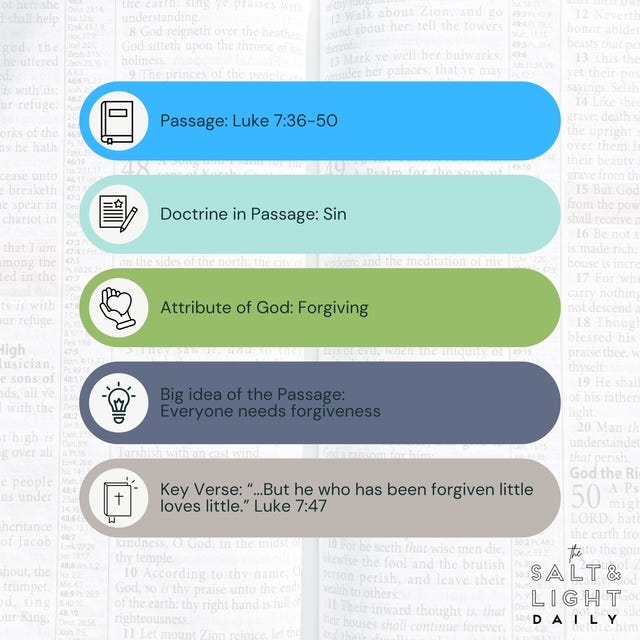
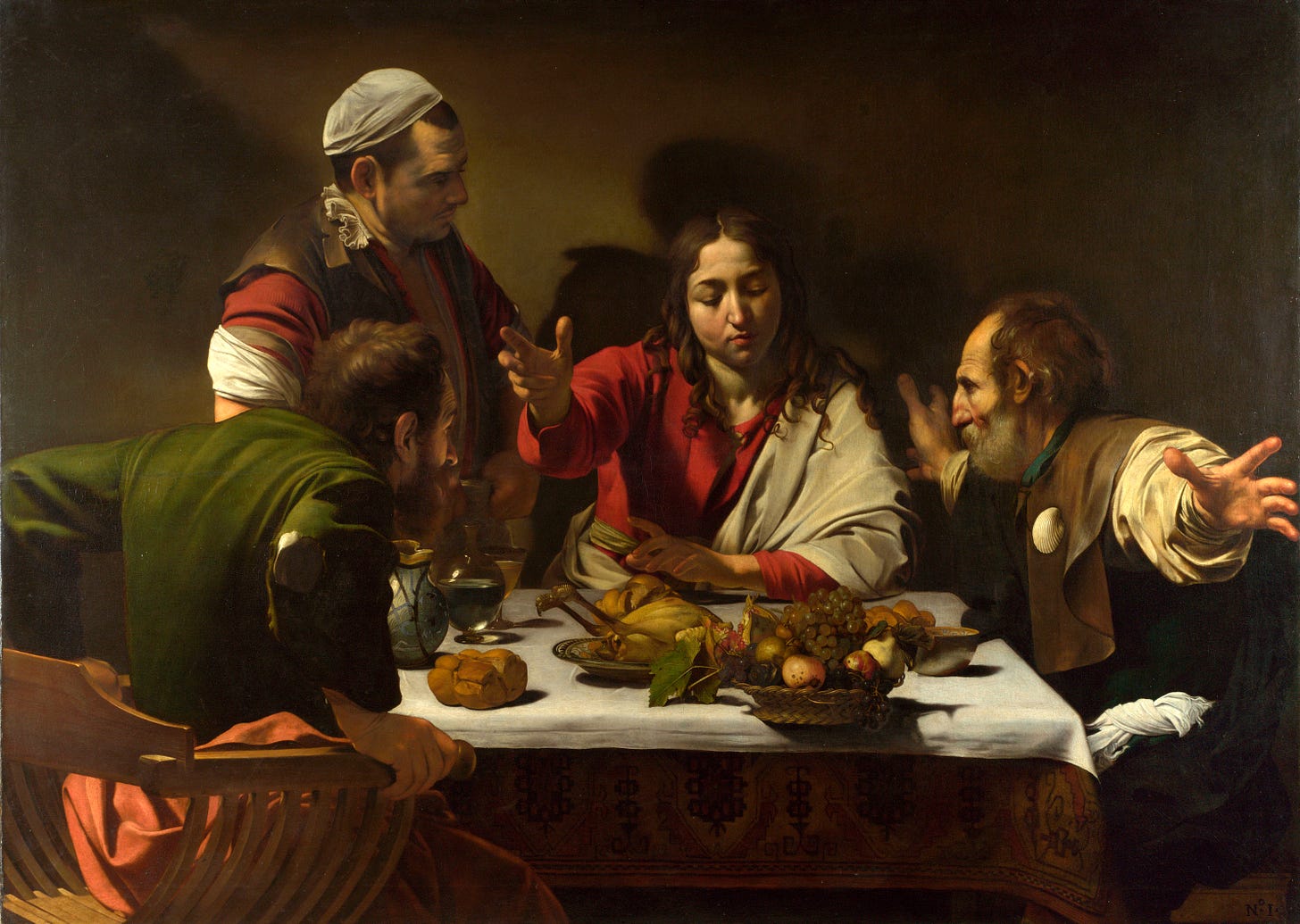

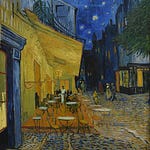
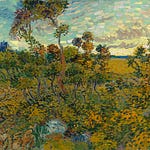

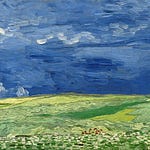


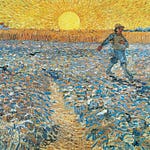

Share this post